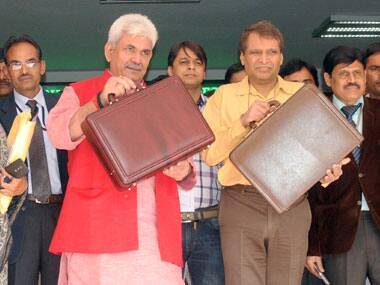By Pawan Khera A budget is presumably an annual exercise that encapsulates the long term vision of a government but breaks it down to annual achievables. It is not, however, true for this year’s Railway Budget. While the budget mentions grandiose objectives to be achieved over the next five years, it fails to answer the critical questions on how will these ideas be funded and what would be the annual deliverables. In the absence of clear milestones, Parliament will have to perhaps design new annual performance measurement parameters to evaluate the performance in 2015 of the Railway ministry. If one were to break down the budget speech of Suresh Prabhu into proposals of upgradation of hardware and software, the budget is dominated by cosmetic value addition. The detailing on big issues is either missing or hiding behind these cosmetics. Whether it is advance ticket booking, the ambitious ‘operation 5-minute’, SMS alerts, WiFi services at 400 stations, e-booking of food, CCTVs or on-board entertainment, all this would certainly bring a smile to the passenger and the contractor lobby, but it will do little to address major problems facing the Indian Railways. [caption id=“attachment_2124947” align=“alignleft” width=“380”]  PIB image[/caption] If we talk of the hardware component of the budget projections, we are in trouble. Barring managerial interventions to optimize existing tracks, the talk of track capacity enhancement or building of railway over bridges/underpasses or freight corridors or any other infrastructure building requires acquisition of land and environmental clearances. Both these requirements take a minimum of three years to come through. The outgoing UPA government had passed the Land Acquisition Bill but the rules for the same have not yet been framed. The NDA government is battling to build consensus on the Ordinance brought in by it amending the LARR 2013. The process of drafting the rules for an Act is a time consuming exercise requiring several rounds of consultations with stakeholders. How can any expansion even begin in this calendar year, with no rules in place to acquire land? How many clearances have been applied for in the Ministry of Environment and Forests? The good news from the Railway Budget is that there has been no increase in passenger fares. This good news is however on predictable lines, in the light of the 14% fare hikes affected by the NDA government when it took charge last year. In fact, if the fuel costs for railways have declined, does the ‘same-fare-as-last-year’ not actually mean an increase in actual fares? The bad news is that freight prices have been hiked. A fundamental question needs to be answered here. Is the Indian Railways a societal-equity engine it is an engine driving growth? Assuming it is both, by keeping one kind of fare fixed and increasing the other, why are we fooling ourselves that the hike will not impact the common man? Apart from the impact of freight hike being felt by the common man, it will also lead to diversion of freight to road – with its own environmental and road safety costs. How will it all be funded? Apart from radio silence on the FDI promised by Prabhu when he took charge as railway minister, there is absolutely no clarity on how will the funds be raised. The gross traffic receipts have come in Rs 917 crores lower than estimated in 2014-15. The estimated cost of expansion of capacity of 9420 km is Rs one lakh crore. The government has proposed to invest raise Rs 8.5 lakh crore over next five years and part of this will be raised from pension funds and multi-lateral banks. To begin with, the contours of the plans are not clear. Also, by issuing debt instruments, are we not incurring more costs? No concrete plan has been spelt out to finance proposals like bio-toilets, electrification of 6608 km of tracks, coastal connectivity routes, WiFi and CCTVs. The Prime Minister’s dream project of ‘Make in India’ too is missing in the railway budget, assuming cheap bio-toilets will be imported from China. That brings us to absence of clarity on job creation in the largest employing sector of the country. The Railway Budget 2015 reads more like election manifesto of the Aam Aadmi Party – lofty promises without a practical roadmap. Pawan Khera is associated with the Congress and the views expressed here are his own
Suresh Prabhu’s rail budget is dominated by cosmetic value addition.
Advertisement
End of Article
Written by FP Archives
see more


)

)
)
)
)
)
)
)
)



